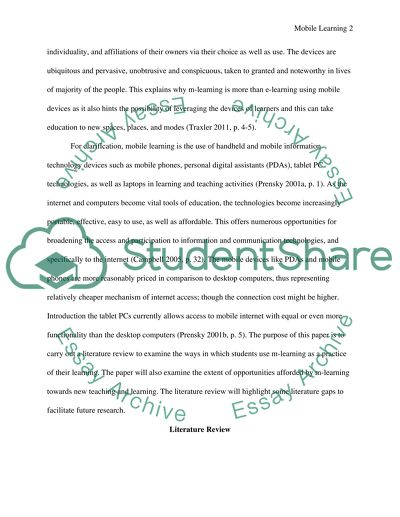Cite this document
(“How mobile learning is used by students as part of their learning Essay”, n.d.)
How mobile learning is used by students as part of their learning Essay. Retrieved from https://studentshare.org/miscellaneous/1589517-how-mobile-learning-is-used-by-students-as-part-of-their-learning-practice-and-to-what-extend-does-it-provide-new-opportunities-for-teaching-and-learning-in-terms-of-access-and-flexibility
How mobile learning is used by students as part of their learning Essay. Retrieved from https://studentshare.org/miscellaneous/1589517-how-mobile-learning-is-used-by-students-as-part-of-their-learning-practice-and-to-what-extend-does-it-provide-new-opportunities-for-teaching-and-learning-in-terms-of-access-and-flexibility
(How Mobile Learning Is Used by Students As Part of Their Learning Essay)
How Mobile Learning Is Used by Students As Part of Their Learning Essay. https://studentshare.org/miscellaneous/1589517-how-mobile-learning-is-used-by-students-as-part-of-their-learning-practice-and-to-what-extend-does-it-provide-new-opportunities-for-teaching-and-learning-in-terms-of-access-and-flexibility.
How Mobile Learning Is Used by Students As Part of Their Learning Essay. https://studentshare.org/miscellaneous/1589517-how-mobile-learning-is-used-by-students-as-part-of-their-learning-practice-and-to-what-extend-does-it-provide-new-opportunities-for-teaching-and-learning-in-terms-of-access-and-flexibility.
“How Mobile Learning Is Used by Students As Part of Their Learning Essay”, n.d. https://studentshare.org/miscellaneous/1589517-how-mobile-learning-is-used-by-students-as-part-of-their-learning-practice-and-to-what-extend-does-it-provide-new-opportunities-for-teaching-and-learning-in-terms-of-access-and-flexibility.


